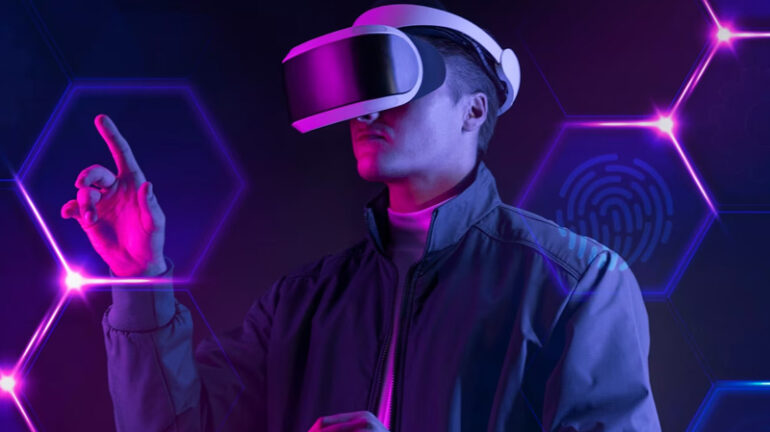
Brands that want to attract and keep the attention of their customers must stay ahead of the curve in the evolving field of marketing. The way businesses connect with their clients has been completely transformed by augmented reality (AR), which has emerged as a game-changing technology. AR creates a universe of possibilities for immersive experiences that have a lasting impression by easily integrating digital information with the real world. We explore here the potential of augmented reality in marketing and how it’s changing audience engagement.
The Rise of Augmented Reality in Marketing:
Augmented Reality is not a new concept, but recent advancements in technology have brought it to the forefront of marketing strategies. In contrast to Virtual Reality (VR), which completely immerses users in a digital environment, augmented reality (AR) enriches the real world by superimposing digital components on it. Marketers wanting to improve brand experiences and establish stronger relationships with customers have taken an interest in this special capability.
Creating Personalized Experiences:
The power of augmented reality (AR) to deliver personalised experiences in marketing is one of its most important benefits. Brands can utilise augmented reality (AR) for personalising information based on user choices and behaviors, promoting a sense of originality that is very appealing to consumers. In this regard, cosmetic companies can create AR apps that let users visually “try on” various beauty items, assisting them in making educated purchasing decisions. The level of customised services not only increases engagement but also encourages consumer loyalty.
Breaking the Fourth Wall:
Traditional marketing strategies often involve passive content consumption. The borders between the digital and physical worlds disappear with AR, which promotes involvement. Users are fascinated by interactive AR experiences that let them examine goods and services in a way that feels real. For example, a furniture company might provide augmented reality (AR) software that enables customers to picture various furniture options in their own homes. Companies can encourage a sense of emotional investment and ownership by engaging customers in this way.
Enhancing Engagement and Storytelling:
The application of augmented reality (AR) enhances storytelling, an effective marketing technique. By fusing digital aspects into authentic environments, marketers can create attractive stories. For instance, historical institutions and museums can employ augmented reality to make displays come to life and provide visitors with an exciting and instructive experience. The emotional bond between the audience and the brand can be strengthened by marketers by incorporating technology into the story.
Bridge Between Online and Offline:
The difference between online and offline activities is becoming more confusing, and augmented reality is a helpful connection between them both. Companies may use augmented reality to symbiotically link their online and offline presence. In some cases, scanning QR codes can launch AR experiences, transforming conventional packaging or advertising into an interactive portal. Through this connectivity, clients are guaranteed a frictionless transition from learning about a product online to using it.
Overcoming Barriers:
While augmented reality (AR) has huge possibilities for marketing, it’s crucial to recognise that putting it into action has its share of difficulties. Availability is a big problem because not all users have access to AR-capable devices. However, this barrier is increasingly vanishing as technology advances. In addition, companies must balance innovation and usability. Instead of making the customer journey more difficult, AR experiences should make it better. The user experience must truly gain from AR, and this must be ensured.
Looking Ahead: The Future of AR in Marketing:
The future of augmented reality in marketing is significantly promising as technology improves. Once companies use AR to push the limits of what’s currently possible, the bounds of creativity will only increase. The potential uses range from augmented shopping experiences to virtual try-ons. Additionally, the combination of augmented reality and other technologies, such as artificial intelligence, may produce even more customised and natural experiences.
Augmented Reality is reshaping the way brands engage with their audiences. By offering personalized, interactive, and immersive experiences, AR is creating a new dimension of marketing that fosters deeper connections and lasting impressions. We are expecting even more creative and significant applications of augmented reality (AR) in the world of marketing as the technology develops and becomes more widely available. Adopting AR could be the key to attracting clients’ hearts, minds, and market share for companies looking to stand out in a cluttered digital world.